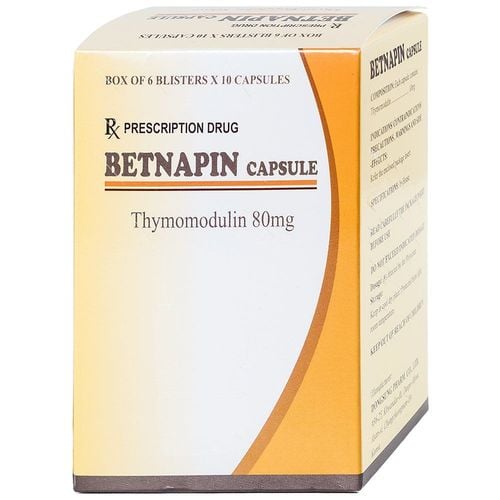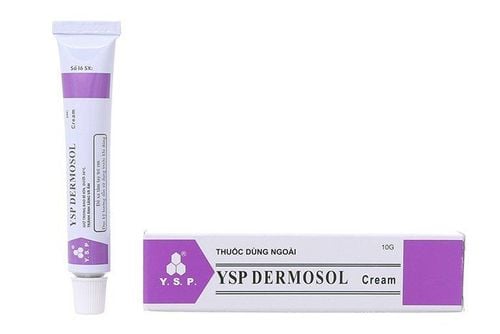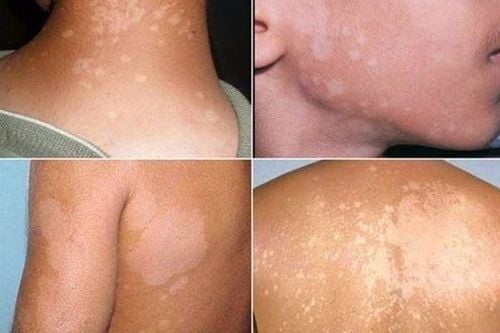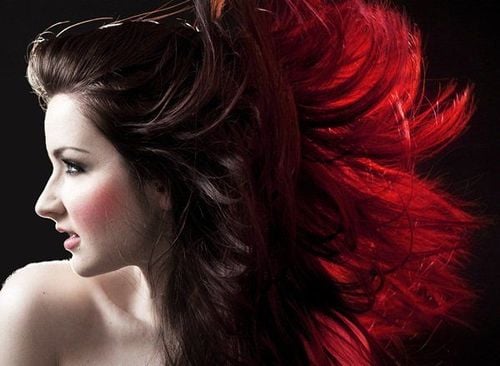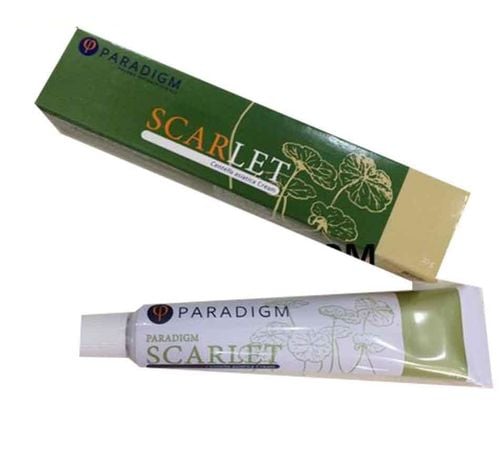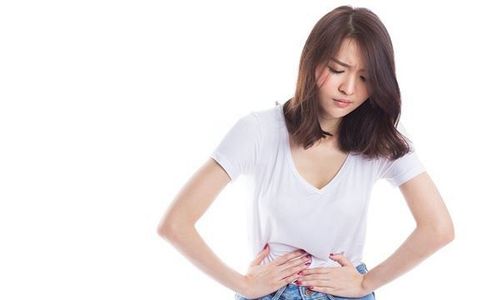This is an automatically translated article.
Itchy blisters on the palms and feet have many reasons that may be due to the location, but it may also be due to a certain pathological manifestation that you do not know or it may also be the effect of a disorder. psychological disorder. The condition of blisters causes a lot of discomfort for many people. So what to do when blisters on the palms of the feet.
1. What are blisters on the palms of the feet?
Blisters are small raised areas filled with fluid and located in the surface layer of the skin. They look like bubbles on the surface of the skin. Although, they are often caused by irritation or friction (such as with an ill-fitting shoe), blisters can also represent the disease process.Blisters on the palms of the feet can be accompanied by several types of skin rashes and inflammation, including some autoimmune diseases. Many people still mistakenly believe that blisters on the palms of the hands and feet are often a manifestation of the disease. Depending on the cause of the blisters, blisters may appear singly or in groups. In contrast to abscesses and blisters, which are collections of inflammatory fluid deep within tissues, vesicles are found in the most superficial layer of the skin.
Blisters are formed from the epidermis, the top layer of the skin. Their main purpose is to protect and create a cushion for the layers below. The blisters may be filled with serum, plasma, blood, or pus depending on how and where they are located. This prevents further damage and allows the tissue time to heal.
Therefore, do not take them lightly when they are discovered, they can be early manifestations of a medical condition that, if not treated promptly, will become more serious.

Nổi mụn nước ở lòng bàn tay bàn chân có thể đi kèm với một số loại phát ban da và tình trạng viêm
2. Causes of itchy blisters on palms and feet
2.1. Friction Any friction or repeated rubbing can cause blisters.
These blisters will usually appear on the hands or feet, as these are areas that are frequently subjected to repetitive wear and tear, whether walking, running or playing the drums.
Areas of skin with thick stratum corneum clinging to underlying structures (such as palms, soles) are more likely to develop blisters.
Blisters are more likely to occur in warm conditions, such as the inside of a shoe. They are also easier to form in wet conditions, than in wet or dry environments.
Blisters can lead to more serious medical problems such as ulcers and infection, although under normal conditions this is rare.
2.2. Extreme temperatures The timing of blister formation helps classify burns. Second-degree burns will blister immediately, but first-degree burns will blister a few days after the incident.
At the opposite end of the spectrum, frostbite also produces blisters. In both cases, blistering is a defense mechanism deployed to protect lower skin areas from heat damage.
2.3. Chemical exposure The skin can sometimes develop blisters or blisters because of certain chemicals, which is called contact dermatitis. It may affect certain individuals by contact with the following:
Cosmetics Detergents Nickel sulfate solvents, used in Peruvian Balsam electroplating (A topical ointment) Insect bites and burning Chemical warfare agents, including mustard gas 2.4. Burns Burns can also cause blisters on your hands or feet. The rate at which blisters develop will vary, depending on the severity of the burn.
1st degree burns: These affect the top layer of skin, causing redness, mild swelling, and tender skin that turns white when pressed. A first-degree burn blisters after a few days. Second-degree burns: These affect both the top and bottom layers of skin, causing the skin to become red and painful with blisters. Blisters can form immediately. Third-degree burns: These affect the deeper layers of the skin, causing the skin to appear white or dark brown, like leather. Third degree burns can cause serious injury and require immediate medical attention. 2.5. If a small blood vessel near the surface of the skin breaks, blood can leak into the space between the layers of skin, causing a blood blister to form. This is a blister filled with blood.
2.6. Medical conditions Several medical conditions can cause blisters, including:
Chickenpox : A rash that forms small blisters and eventually scabs. Herpes: Herpes caused by the herpes simplex virus are clusters of blisters. Scalp impetigo: Mostly seen in children under 2 years of age, blisters can form on the arms, legs or trunk. Eczema: Blistering may occur along with other skin symptoms such as cracking, scaling, and peeling of the skin. Dyshidrosis: A skin condition characterized by the rapid appearance of many small, clear blisters. Bullous Pemphigoid (BP): is a benign, chronic progressive, autoimmune bullous skin disease of the skin. An autoimmune disease that affects the skin and causes blisters, it is most commonly seen in older patients. Pemphigus disease: A group of rare autoimmune diseases that affect the skin and mucous membranes. The immune system attacks an important adhesion molecule in the skin that separates the epidermis from the rest of the skin layers Dermatitis Herpetiformis: This chronic blistering skin condition is not associated with herpes but is present. the same, similar. Skin radiation syndrome: These are the effects of radiation exposure. Epidermolysis bullosa: This is an inherited disease of the connective tissue that causes blistering of the skin and mucous membranes. Diabetes: People with severe diabetes may experience blistering of the hands or forearms. They are usually painless and will heal on their own.

Loại mụn nước phổ biến nhất đối với hầu hết mọi người là mụn do ma sát
3. The formation of blisters
The most common type of blister for most people is friction acne. In their most basic form, they occur due to an increase in shear stress between the surface of the skin and the rest of the body.
The layer of skin most susceptible to shear force is the stem cell layer. As this layer separates from the underlying tissues, a plasma-like fluid leaks out of the cells and begins to fill the void created. This fluid encourages new growth and regeneration.
About 6 hours after the blister appears, the cells at the base of the blister begin to take up amino acids and nucleosides. These are the building blocks of proteins and DNA. At 24 h, cell division markedly increased. New layers of skin above the gonadal layer are regularly formed. After 48 hours, a new layer of skin can be seen and at 120 hours, a new layer of skin on top is visible. As these new cells grow, fluid is reabsorbed and swelling is reduced. Painful blisters on the palms or soles are usually caused by cut tissue in the deeper layers of the skin. These layers are next to nerve endings, thus creating more pain.
4. When to see a doctor for blisters on hands and feet?
Although most blisters will heal on their own, you may need to consult your doctor in some cases:
You had your last tetanus shot more than 10 years ago. You have had swollen lymph nodes since the blisters appeared. You have more swelling and pain in the affected area. You see signs of infection such as pus, hot and red skin around the blister, or a fever.
5. What to do when blisters on the palms and feet?
Most blisters heal on their own without treatment. As long as a person does not break a blister, new skin will develop underneath as the top layer of skin dries and flakes off naturally.
Dermatologists recommend against squeezing blisters because they act as a protective layer against infection. Instead, people can cover the blister with a bandage to protect the blister from further damage.
Blisters on the palms of the hands from burns or exposure to chemicals are a temporary response to stimuli. In these cases, the best treatment is to avoid the cause.
The blisters are caused by medical conditions, such as atopic eczema and dyschromia, which may require treatment. However, you may not know the cause until you see your doctor. Once the doctor has diagnosed the cause, they will prescribe medication to treat the symptoms.
Take care of blisters at home by:
Wash your hands with warm water and antibacterial soap Using a cotton swab, disinfect the needle with rubbing alcohol Clean the blister with an antiseptic Take the needle and make a puncture small on the blister. Let the liquid drain completely away from the blister. Apply an antibacterial ointment or cream to the blister. Cover the blister with a bandage or gauze. Clean and reapply the antibacterial ointment daily. Keep the blister covered until it heals. Equip safety protective equipment in case of need to be exposed to irritating factors. Helps protect the skin from the harmful effects of direct contact. Regularly wash your hands with warm salt water, which helps limit the growth of bacteria and the accumulation of harmful elements on the skin. Adjust your own diet, reduce foods high in fat, increase green vegetables and fruits. This adds an essential amount of nutrients to your body as well as your skin, helping your immune system to be strengthened and fight pathogens. Do not use stimulants, alcohol, tobacco, etc. to avoid affecting the liver, to help regulate and detoxify activities in the body to be operated in the most effective way. Pay attention to check and use clean water to help limit bacteria and disease-causing agents in water.

Rửa tay bằng nước ấm và xà phòng diệt khuẩn là cách chăm sóc mụn nước tại nhà
6. Prevention of blisters on palms and feet
Prevent friction blisters by eliminating the cause of friction by:6.1 Avoid blisters on your feet Wear comfortable, well-fitting footwear and clean socks. Shoes that don't fit or are too stiff, such as high heels, have a higher risk of blistering. Damp skin is more prone to blisters, so socks that manage moisture or change socks often can help. During exercise, specially designed athletic socks can reduce the amount of perspiration available to the feet. It is also important to have adequate walking or hiking shoes ready before embarking on a long trek. Applying duct tape, pads, or mole skin to pimples can help prevent blisters from appearing. Better yet, friction-reducing patches are glued to the inside of the shoe. These will last longer, during multiple socks or insole changes. 6.2 Avoiding blisters on hands When using tools, performing manual work, or playing a sport where bat handling is required, wearing gloves will prevent most blisters.
In some sports, such as gymnastics, weightlifting or rowing, clapping is good practice. In addition, talcum powder reduces friction and can be used in conjunction with gloves and tape, or as a standalone option. However, moisture-absorbing talcum powder will not perform well for long periods of operation.
Although, blisters on the palms of the feet are a painful discomfort, they usually do not indicate any medical problem. By following some of the basic rules above, blisters can often be prevented.
Please dial HOTLINE for more information or register for an appointment HERE. Download MyVinmec app to make appointments faster and to manage your bookings easily.




